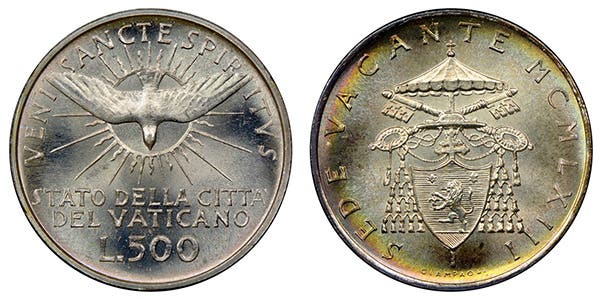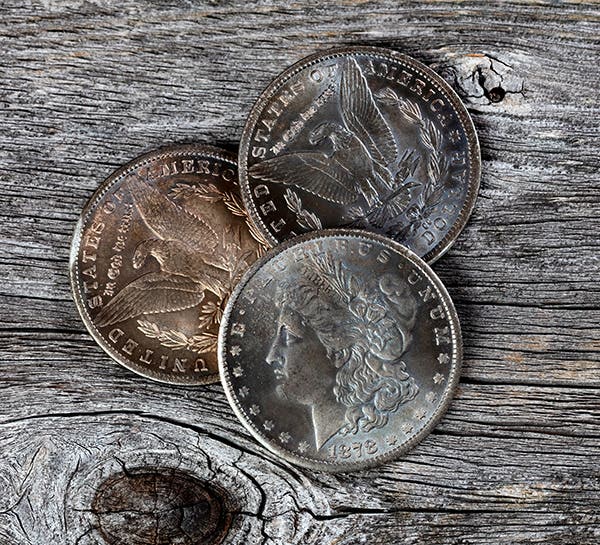Viewpoint: Color important part of coin grade
What is the future of coin grading? Can collectors, professional numismatists, dealers, and organizations agree on one grading standard? Can we be more precise when describing the grade or color of a coin?
What is the future of coin grading? Can collectors, professional numismatists, dealers, and organizations agree on one grading standard? Can we be more precise when describing the grade or color of a coin? When will decimal grades become adopted for use outside the grading services? I hope readers will continue a discussion of these topics after reading my comments here.
I think the color system proposed by Gregory Kipp in a November “Viewpoint” is a good one and gets my vote. Previously, I explained how simple it was to describe the basic color of a copper coin many decades ago. Any coin that was not full red or full brown was described as red-brown.
For purposes of simplicity, I’m ignoring the flowery descriptions often found in auction catalogs to describe the multitude of colors copper can achieve such as olive and dark chocolate. The old system was simple and anyone could separate coins into the three categories with virtually no training at all.
The red, red-brown, brown-red, and brown scale did not just pop out of my head a few months ago at ICG. Randy Campbell brought it up. Charles Hoskins and I had used this four-color system for internal diagnostics at the International Numismatic Society’s Authentication Bureau (INSAB) in the late 1970s coupled to our technical grading.
Simplicity had been the basis for the technical grading system we developed in the 1970s. An ideal grading system had to be simple to use and precise. For that reason, we continued to use the red, red-brown, and brown color system to describe the copper coins we graded for customers. There was no percentage of red or brown as that would complicate the system!
There is one caveat as far as using percentages in any system. The color of a coin can change after it is graded. For example, in the 1990s, PCI evaluated the percentage of “white” on the label of silver dollars and silver eagles. Unfortunately, over time, many of the 100 percent white coins toned in their slab. Copper can change also. A red coin today may become a red-brown coin in the future. Perhaps that is one reason the major grading services no longer guarantee the color of copper coins. Additionally, there are countless cases where a natural appearing coin is graded and encapsulated only to develop unsightly stains over time due to a chemical reaction from some prior treatment.
Whose intellectual property will a new approach to color be? Now that Mr. Kipp has put his idea to paper, can anyone use it? Recently I read that there is a current court case where some collector claims to have sole use of the “plus” grade. That’s ridiculous. I’m sorry to inform this fellow that we used the “plus” grade in the technical grading system back in the 1970s to denote a coin in the top 1-3 percent of a grade range. Thus a coin graded VF+ was one that some professionals might believe just makes the XF grade. During this same time, dealers were using a + sign to describe any coin grading anywhere in the top half of a grade range (51-99 percent). There is nothing new under the sun.
Finally, there has never been a universal grading standard. The ANA published a grading guide that was only loosely followed. As each new grading service was established, it adopted its own standards. In 1986, one well-respected professional authenticator/grader called for a meeting to see if the services could come together under one grading system. At that time, I knew of only four services besides INSAB. Imagine my surprise to find over a dozen grading services were represented!
As a brash young professional, I told the owner of one of these places that INSAB could never agree to use his company’s loose standards! Unfortunately, no positive meeting of the minds took place at that first meeting and most of the attendees are no longer in business.
Today, there are four major grading services each with different standards. Nevertheless, readers would be surprised at how consistently close these services grade. The major differences I’ve encountered between services exist in the amount of rub tolerated before a coin is graded AU and the amount of “doctoring” allowed on a coin considered original and unaltered.
That’s another reason I believe it will be a long time before there is one universally used grading system. Grading will remain subjective until the eyes and hand of man are removed from the equation.
What do you think?
This Viewpoint was written by F. Michael Fazzari, who writes “Making the Grade” and “Facts about Fakes” for Numismatic News. To have your opinion considered for Viewpoint, write to David C. Harper at david.harper@fwmedia.com.
More Coin Collecting Resources:
• Subscribe to our Coin Price Guide, buy Coin Books & Coin Folders and join the NumisMaster VIP Program








